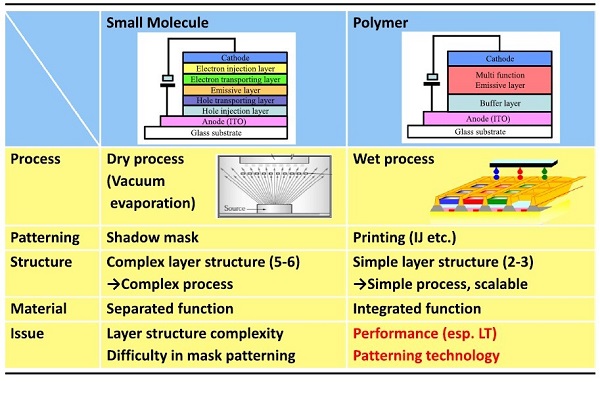Researchers at Sumitomo Chemical describe some of the key developments in printed organic devices over the years and their thoughts on winning the award.
While the world of electronics devices was radically different 30 years ago when Sumitomo Chemical (SC) began developing printed electronics technology, the company had already felt it was an area where they could make a significant contribution. Drawing on the company’s decades of expertise in this field, Chizu Sekine, a researcher at SC, and colleagues prepared a review of the progress made in applying printed electronics to organic devices. The review has been referenced by several other papers since it was published in the journal Science and Technology of Advanced Materials in 2014, and this year it won the journal’s best paper award.
“I think that the strong demand from the IoT or Trillion sensor network society is attracting us towards the development of printed electronics technology,” says Chizu. “The key demands of these applications are (1) on-demand fabrication of various designs and (2) low manufacturing cost – printed electronics can give a solution to both these demands.”
The review focuses on organic LEDs (OLEDs) and organic photovoltaic devices (OPV), which as Chizu explains provide useful examples of the state of the field. The review covers several milestones that have presented a gear change in the performance of these devices, such as the efficiencies achieved, and the ease of printing them. While Chizu suggests that materials development will be key to future progress, she adds that no single technology alone will lead to the commercialization of practical products. “I think that hybrid technology will be the most significant in future development.”
On hearing of the award Chizu was surprised and pleased as the review had attracted more interest than at first expected. She says, “This is a good opportunity to empower our research group to win the challenge of organic printed electronics development over our competitors.”
Image Caption: Comparison of characteristics between small molecule type and polymer type OLED























